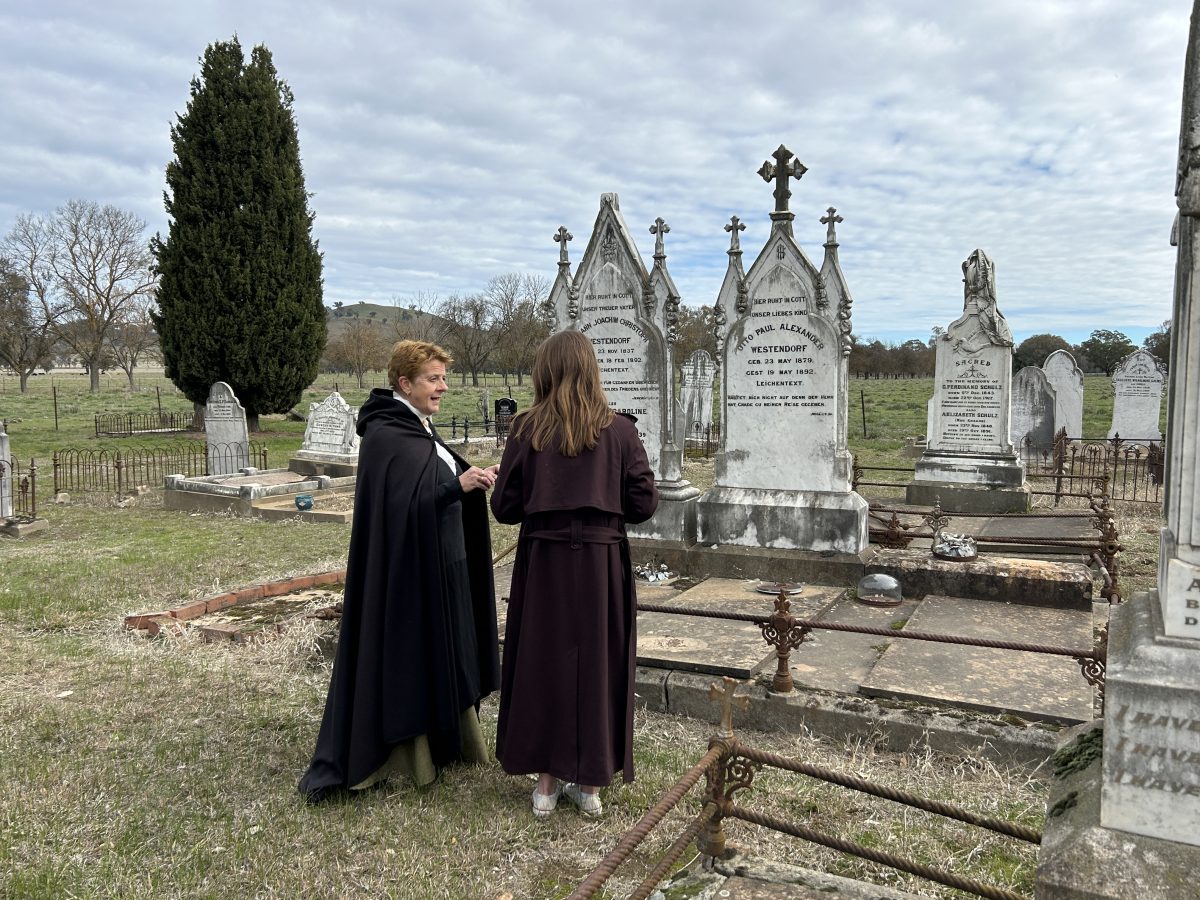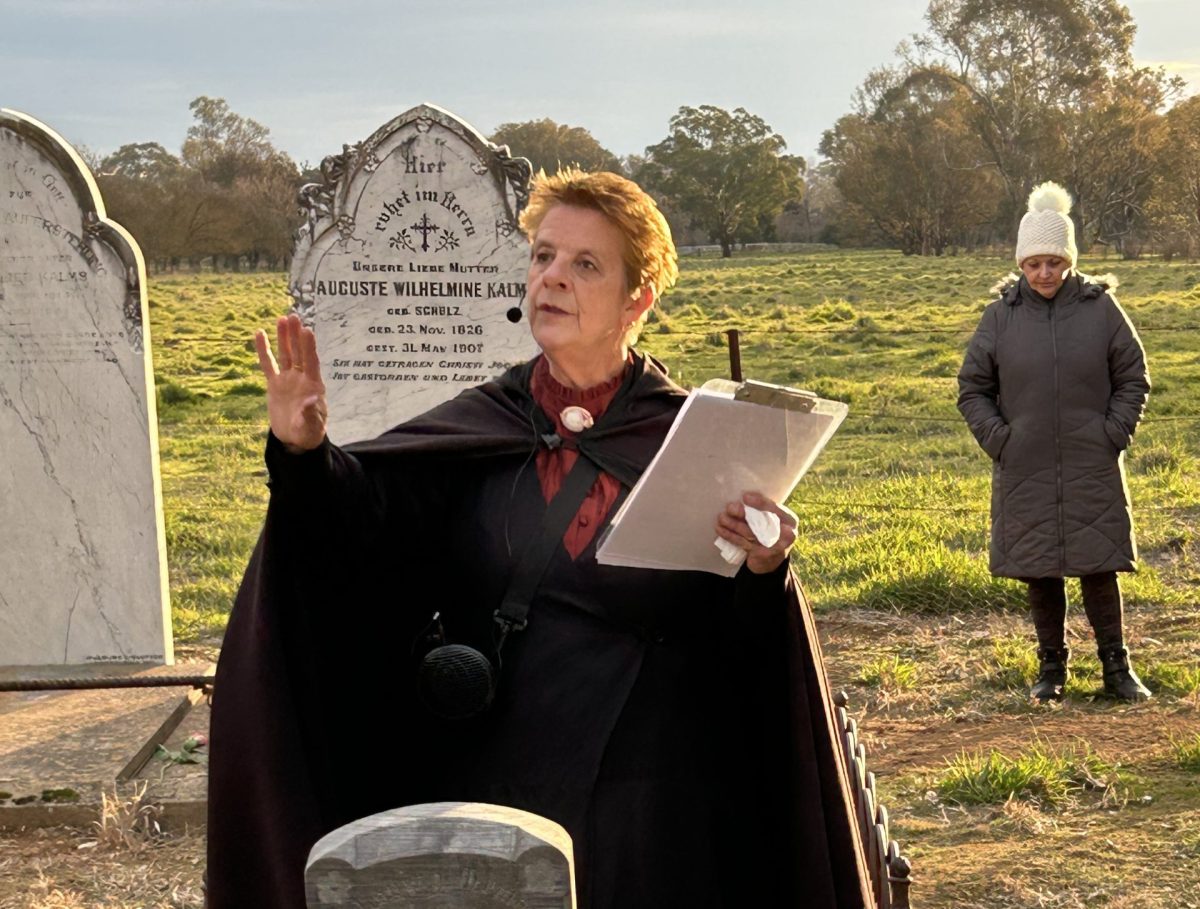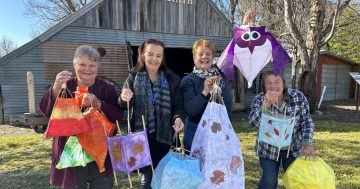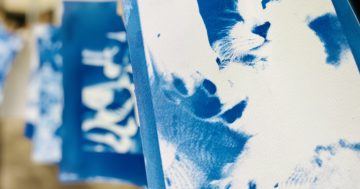
Jindera’s Margie Wehner (left) will lead a Sunday stroll through St John’s Cemetery on Sunday 31 August, where tales long buried rise gently from the soil. Photo: Vanessa Hayden.
Third generation cemetery keeper Margie Wehner has long held a fascination for the dearly departed.
Even as a girl, she felt drawn to the quiet dignity of farewell.
“When I was young I was very interested in being an undertaker,” she said.
“We had a family friend who was in the business and I was always intrigued. When I was in my 50s I was able to spend some time working with a local funeral home, I have always felt a strong calling to the profession but in my youth it wasn’t considered a career option.”
While she didn’t follow the funeral path professionally, her family’s legacy led her to a different kind of calling. She’s the quiet custodian of Jindera’s two Lutheran resting grounds, tending to those recently departed with care.
This Sunday (31 August), she’ll take another step into the stories of the past as she leads a guided walk for those curious about the lives lived by those beneath the headstones at St John’s cemetery.
As a fundraiser for the Jindera Pioneer Museum, which Margie heads up as president, the walk kicks off at 4 pm and after the “grave exploration”, guests will venture back to the museum tearoom for some sherry and hot soup by the fire.
“I inherited the cemetery keeper role from my father Ernie who took over from my grandfather Fred. They were both the blacksmiths in the town at the time and also had all the right tools to be digging graves,” she said.
“Autopsies and burials were done very quickly in those days, there was no refrigeration and there weren’t cremations locally until the crematorium was built in Albury in the 1970s.
“Grave digging was a specialist job, soil can be unstable when it is wet and in summer it was a slow, hard dig.
“You had to take a ladder in with you so you could climb back out.
“That’s something that I don’t have to deal with fortunately!
“My role these days is more in line with record keeping and when and where people are placed and the paperwork that goes with that.”

Margie Wehner also heads up the volunteer team at the Jindera Pioneer Museum and inherited the role of cemetery keeper from her father Ernie. Photo: Vanessa Hayden.
The plots at St John’s extend back to the mid 1800s and the time when the area was settled largely by German migrants who were drawn to the region by the Robertson Land Act of 1861 which saw land available at one pound per acre.
Names like Westendorf, Krause, Harberecht, Molkentin, Lidner and Schulz echo throughout the cemetery.
They are etched into headstones, synonymous with soil tilled and homes built. But beneath those names lie stories cut short. Farming accidents claimed sons and fathers before their time. Illness crept in when the doctor was still a day’s ride away and the horse and cart too slow for saving grace.
“There are some tragic tales here. The cemetery has many unmarked children’s graves and others who remain a mystery to this day, including that of Count Kurt Stolberg, we have no idea why he is here,” Margie said.
“Stolberg is an old and large dynasty from Prussia, regarded as highly aristocratic. What drew him to Jindera?”
Two of the more ornate headstones belong to Johann Westendorf and his wife Augusta, who migrated to South Australia in 1850 and were married in 1859.
“Johann and Augusta moved to Jindera in 1867 and took up land in Jindera that became known as Elm Park. In 1892 he was involved in a chaff cutting accident and he died at 55 years old. At least one of his children also came to a fairly horrific end involving a horse and cart. The cemetery is home to many stories like this.”
Margie will share more insight into her role as a keeper during her talk. She says some people are not sure about a tour in a public cemetery so there are some rules in place to ensure a respectful visit.
“This is the second walk we have held recently. We had such good feedback from the first one that we were encouraged to stage it again.
“The last one sold out quickly so I know there are plenty of people out there who are as fascinated as I am about the history of these people and how those who came before us shaped the region and made it what it is today.”
The cemetery walk starts at 4 pm for 1.5 hours before moving to the museum for refreshments. Tickets are $38 per person and can be booked via Trybooking









